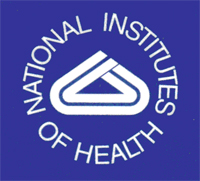Molecular & Cell Biology Faculty Members Awarded NIH Supplements

Three faculty members of the Boston University Henry M. Goldman School of Dental Medicine (GSDM) Department of Molecular & Cell Biology received supplements from the National Institutes of Health (NIH). As part of the American Recovery & Reinvestment Act of 2009 (ARRA) NIH awarded supplements to current grants in order to accelerate the tempo of ongoing science.
The faculty members, Professor and Director of the Predoctoral Research Program Dr. Maria Kukuruzinska, Professor Dr. David Levin, and Professor Dr. Miklos Sahin-Toth were awarded $875,000 in total.
Dr. Kukuruzinska’s grant is titled, "Planar Cell Polarity Pathway Drives Duct Extension in the Developing Submandibular Gland," and through her research she aims to decipher the mechanism underlying duct formation during branching morphogenesis of the submandibular gland. The one-year supplement will further support the ongoing studies currently funded by her R01 grant titled, "Regulation of Submandibular Gland Development by Adhesion Receptors."
The administrative supplement awarded to Dr. Levin will allow him to expand on the aim of his ongoing grant titled, "Cell Wall Integrity Signaling in Yeast," through March 2011.
"We use yeast as a model system with two major goals," said Dr. Levin. "The first is to identify novel mechanisms of stress signaling, to understand better the integration of different signals, and the regulation of output from stress signaling. The second is to identify potential targets for antifungal drug development."
Dr. Sahin-Toth received two separate supplements for his grant titled, "Chymotrypsin C in Pancreatitis."One is an administrative supplement to purchase an RT-PCR machine and the other is a competitive revision supplement which will fund the development of novel chymotrypsin C inhibitors for a two-year period. The overall goal of Dr. Sahin-Toth’s research is to investigate the role of chymotrypsin C in digestive physiology and the role of chymotrypsin C mutations as risk factors for chronic pancreatitis in humans.